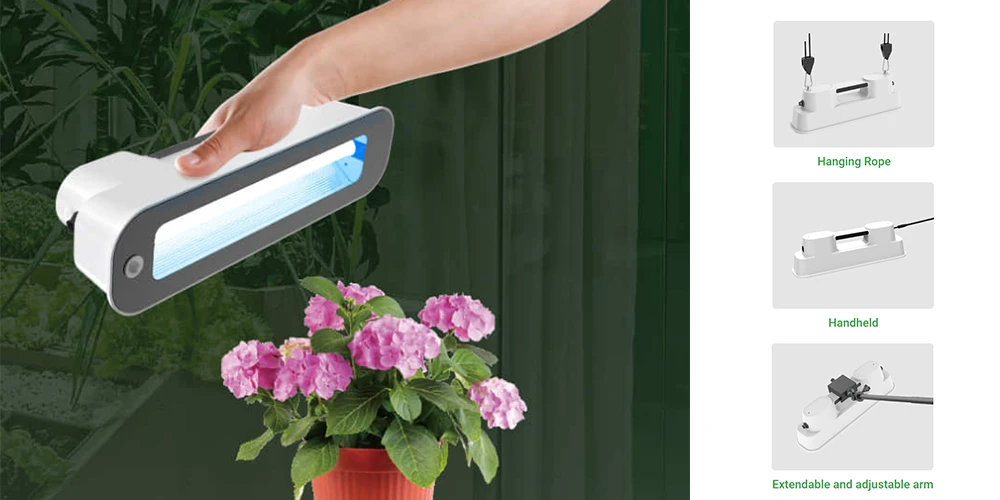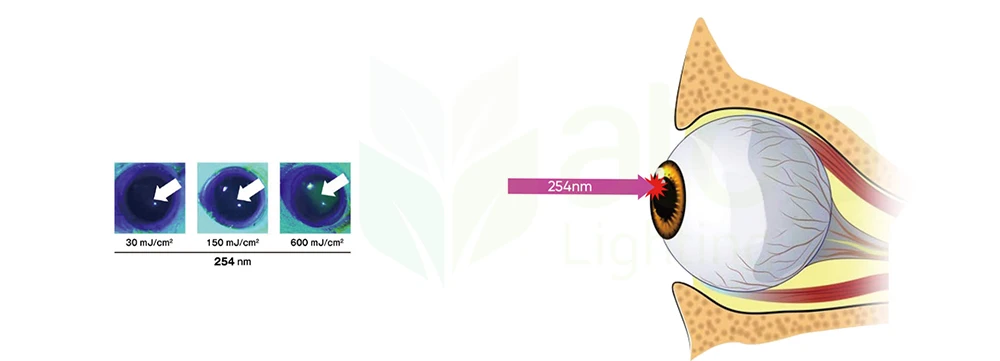Say Goodbye to Plant Diseases with UVC Light
Plant diseases can be a gardener's worst nightmare, causing frustration, financial loss, and a sense of helplessness. While pesticides and insecticides effectively combat pests and diseases, their harsh chemicals often harm beneficial insects like bees and damage the environment. But what if there was a way to protect plants without resorting to harmful chemicals or labor-intensive methods?
Enter UVC light: nature's own sterilizer and a safer solution for plant health. Long used in hospitals and water treatment facilities, UVC light has also proven its worth in commercial horticulture for years. This powerful tool effectively eliminates powdery mildew, other fungi, viruses, and bacteria that cause plant diseases.
UVC light works by disrupting the DNA of harmful microorganisms, preventing them from reproducing and spreading. Unlike chemical treatments, it leaves no residue and poses no threat to beneficial insects or the surrounding ecosystem. Progressive growers, such as Floweryfields in Austria, have already incorporated UVC light into their daily plant maintenance routines, reaping the benefits of healthier crops. This innovative approach offers a promising solution for those seeking effective, environmentally friendly plant care methods.
What is UVC light?
UV energy has a shorter wavelength than visible light, making it invisible to the human eye. UVC light, which has the shortest wavelength within the ultraviolet spectrum, ranges between 100 and 280 nm. Despite its short wavelength, UVC is the most impactful form of ultraviolet radiation, known for its high effectiveness in disrupting DNA.
While natural UVC is produced by the sun, it is almost entirely filtered out by the Earth's atmosphere, leaving us with little to no natural exposure to it. However, artificial UVC light is widely used in hospitals, laboratories, water treatment facilities, horticulture, and other environments that require a high level of sanitation due to its ability to kill microorganisms.

Benefits of using UVC light for plant disease control
UVC light provides significant benefits for controlling plant diseases, primarily due to its chemical-free nature. By disrupting the DNA of harmful microorganisms, UVC light prevents them from reproducing and causing diseases. This non-chemical method not only leads to healthier plants but also creates a safer environment for humans and beneficial insects.
Another key advantage of UVC light is its ability to combat a wide range of plant pathogens, including bacteria, fungi, and viruses. This comprehensive protection simplifies plant care, particularly in commercial grow rooms, by addressing multiple disease threats with a single solution.
Using UVC light can also enhance overall plant health. Healthier plants are more resilient to stress and environmental challenges, which in turn promotes better growth and higher yields.
How to use UVC light for plant disease control
UVC light is highly effective at disrupting the DNA of harmful microorganisms, making it a powerful tool against DNA/RNA-based viruses, molds, and bacteria, such as powdery mildew and gray mold. Currently, UVC is widely used to combat powdery mildew in cannabis cultivation. Research also indicates that applying UVC treatment to strawberries before flowering can enhance blooming and reduce the leaves' susceptibility to infection by Botrytis cinerea (gray mold). However, if you plan to use UVC to eliminate plant diseases in an emergency, it's crucial to first identify the cause of the disease.
Choose the right type of UVC light
Once you're confident that UVC will be effective, the next step is to choose the right UVC fixture. The most effective wavelength for UVC is around 254nm. There are various UVC devices available on the market with this wavelength, ranging from handheld wands to fixed lamps. Handheld wands or portable UVC lights are convenient and easy to use, while larger, fixed installations can cover more extensive areas. Some handheld UVC lights, such as our UV04, offer versatile installation options. The lifting rope and hanging ring are compatible with a variety of round and square mounting brackets.

Determine the appropriate UVC exposure
Using the right amount of UVC light is crucial—too little won't effectively treat plant diseases, while too much can burn the plants. For most bacteria and viruses, a UVC dose of 20 to 50 mJ/cm² is usually sufficient to achieve a significant reduction (90% or more). Higher doses, such as 100-200 mJ/cm², may be required for more resistant microorganisms or to achieve greater reductions (99.9% or 99.99%).
Several factors influence the appropriate UVC dosage, including intensity, exposure time, and distance from the plants. The intensity of the UVC light source is measured in µW/cm², and exposure time can vary. For example, when preventing diseases in cannabis plants, UVC light should be used for short durations, around 5-10 minutes per session. If dealing with an active infection, exposure might be increased to 15-30 minutes per session, but this should be done cautiously, as excessive UVC exposure can damage the plants. These guidelines are just for reference, and the specific exposure time should be tailored to your particular conditions.
Are UVC lights safe
Yes, UVC light can be safe for your plants and yourself when used correctly. As an ultraviolet radiation, UVC is known for its ability to kill microorganisms. There it is effective in treating plant diseases. However, it’s essential to handle UVC light with care to avoid potential harm.
When used correctly, UVC light can effectively target harmful microorganisms without damaging healthy plant tissues. UVC treatments can also provide rapid results, helping to control diseases before they spread further. Additionally, it is a chemical-free approach to protect the beneficial pests and environments.
People often worry about the safety of UVC light, particularly its potential impact on human health. UVC light can be harmful to human skin and eyes. While studies have shown that UVC light at 254nm is less likely to damage human skin and eyes, it's still essential to take precautions. To ensure safety, always wear protective gear, such as gloves, goggles, and a lab coat, when working with UVC lights.


